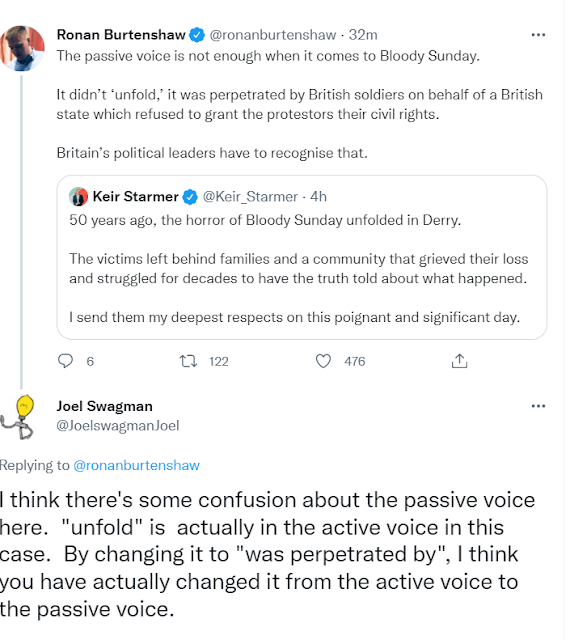L. Frank Baum - Little Wizard Stories of Oz [REVIEW/DISCUSSION]
I use this blog for two different projects: my reviews and my materials for Teaching English to Speakers of Other Languages (TESOL).
Monday, January 31, 2022
Tik-Tok of Oz by L. Frank Baum
(This review is written using my new format for book reviews.)
Background Information
Plot Summary
The Reading Experience/ Evaluation
L. Frank Baum revisited this story for the plot of his 1913 musical The Tik-Tok Man of Oz, starring James C. Morton and Fred Woodward. Aside from Tik-Tok, a princess named Ozma, and a visit to the Nome King's domain, the similarities between the book and the finished play were minimal, allowing Baum to re-adapt the latter as the eighth Oz book, Tik-Tok of Oz, in 1914.
“That’s very kind of you, ma’am,” said Shaggy. "But unless I can find the underground cavern of Ruggedo, the Metal Monarch, I shall never find poor brother."(This King was formerly named “Roquat,” but after he drank of the “Waters of Oblivion” he forgot his own name and had to take another.)
“Why, they’ve been conquered before, if I remember aright,” answered Kaliko with a grin. “Once I saw you running from a little girl named Dorothy, and her friends, as if you were really afraid.”“Well, I was afraid, that time,” admitted the Nome King, with a deep sigh, “for Dorothy had a Yellow Hen that laid eggs!”The King shuddered as he said “eggs,” and Kaliko also shuddered, and so did the Long-Eared Hearer; for eggs are the only things that the nomes greatly dread. The reason for this is that eggs belong on the earth’s surface, where birds and fowl of all sorts live, and there is something about a hen’s egg, especially, that fills a nome with horror. If by chance the inside of an egg touches one of these underground people, he withers up and blows away and that is the end of him—unless he manages quickly to speak a magical word which only a few of the nomes know. Therefore Ruggedo and his followers had very good cause to shudder at the mere mention of eggs.
Links
The book has several continuity errors with earlier books in the series, particularly The Road to Oz. Whereas Polychrome met the Shaggy Man in that book, this point is neglected by Baum in Tik-Tok. Also, whereas the Shaggy Man merely needs to carry the Love Magnet on his person for it to work in The Road to Oz, in this book it is necessary for him to remove it from his pocket and physically show it to those he wishes to love him.
By this point in the series, Baum has set a formula that he sticks to, but the good news is that he’s still able to come up with a few different tweaks that can keep things fresh. It was also good to see some new characters again, but we also got to see a lot of friends, including the titular character.I also felt as though there were fewer inconsistencies here, something that’s plagued the Oz books since the second one. It’s as though Baum immediately forgot what he wrote in his books as soon as he sent them off to the publisher. There was even quite a clever piece of retconning in which a character’s name changed but it was explained by a previous plot point.
And his video review is here: L. Frank Baum - TikTok of Oz [REVIEW/DISCUSSION]
Extended Quotation
Sunday, January 30, 2022
I probably should have left this alone. But for some reason, I just couldn't help myself.
I think there's some confusion about the passive voice here. "unfold" is actually in the active voice in this case. By changing it to "was perpetrated by", I think you have actually changed it from the active voice to the passive voice.
— Joel Swagman (@JoelswagmanJoel) January 30, 2022
You could say "British soldiers perpetrated Bloody Sunday" if you want to avoid the passive voice.
— Joel Swagman (@JoelswagmanJoel) January 30, 2022
I just googled "middle voice" now. It looks interesting. But I wonder... the examples they use seem to be when the verb has both a transitive and intransitive form. Would this work for "unfold"? https://t.co/Ghl8g0jnlG. pic.twitter.com/oaTChqRExG
— Joel Swagman (@JoelswagmanJoel) January 30, 2022
From my (admittedly) 2 minutes of research, I get the impression that middle voice would refer to cases in which the verb has the option of taking several different voices. I think with "unfold", there's just the one form, no?
— Joel Swagman (@JoelswagmanJoel) January 30, 2022
You mean in the "unfolded" sentence or in the "was perpetrated by" sentence?
— Joel Swagman (@JoelswagmanJoel) January 31, 2022
Yes, that's my understanding of the sentence. "horror" is of course an abstract noun, but English has the ability to nominalize just about any concept. And then those abstract nouns can syntactically fill out the slots of either active or passive sentences
— Joel Swagman (@JoelswagmanJoel) January 31, 2022
Exodus 21:22-25
From: The Book of Exodus
Exodus 21:22-25
Saturday, January 29, 2022
There's only one kind of people who would vote to ban Maus, whatever they are calling themselves these days. https://t.co/fs1Jl62Qd8
— Neil Gaiman (@neilhimself) January 26, 2022
Thursday, January 27, 2022
Wednesday, January 26, 2022
Leave those kids alone you virtue signaling puppet @JustinTrudeau https://t.co/pOR3xqKs9f
— Dr Jordan B Peterson (@jordanbpeterson) January 25, 2022
Enough. Enough COVID mandates. Drop the damn masks and the idiot rules and get on with life. Today. https://t.co/hReCA19rMH
— Dr Jordan B Peterson (@jordanbpeterson) January 24, 2022
You're not an "environmental leader." You're a hypocritical moralist willing to sacrifice whole productive provinces to your own apocalyptic doom-ridden delusions @s_guilbeault https://t.co/9lDIR2YFpE
— Dr Jordan B Peterson (@jordanbpeterson) January 24, 2022
Those are just examples pulled from the past couple days, but take my word for it, it's frequently like this. Go ahead and follow him for a bit on Twitter, you'll see him angrily railing against environmentalists and Covid precautions in a way that make him indistinguishable from any other right-wing crank.
Holy moly. I don't think I can do this. First words out of Peterson's mouth in the Joe Rogan interview are complete self parody. I can't even dunk on it. pic.twitter.com/hIDYPi0KDc
— bad_stats (@thebadstats) January 25, 2022
Tuesday, January 25, 2022
2013 Reading List
14. From Reader to Reading Teacher by Jo Ann Aebersold and Mary Lee Field August 11, 2013
New episode of Revolutions Podcast: 10.83- Terror is Necessary: But is it though?
Mike Duncan mentions they were also drawing their lessons from the Paris Commune--Lenin that that the reason the Paris Commune failed was because they weren't vicious enough. (Although that part I actually knew already.)
Monday, January 24, 2022
2012 Reading List
6. Shakespeare: The World as a Stage by Bill Bryson June 13, 2012

















































